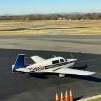Thoughts on the Oil Cooler
-
Members Online
- Justin Schmidt
- itsmekw
- Ragsf15e
- UteM20F
- ighazali
- Rmnpilot
- Robert Ripley
- hammdo
- Schllc
- Dustoff49
- Jackk
- Gilt
- AdamJD
- M20C Driver
- MoonMan
- varlajo
- Danb
- redbaron1982
- DavePage
- N201MKTurbo
- Nathan211
- LANCECASPER
- ToddCC22
- kortopates
- rklems
- Utah20Gflyer
- Guillaume
- Fly Boomer
- 201Mooniac
- EricJ
- eman1200
- Shadrach
- richardbrochu27
- M20F
- slowflyin
- 65MooneyPilot


Recommended Posts